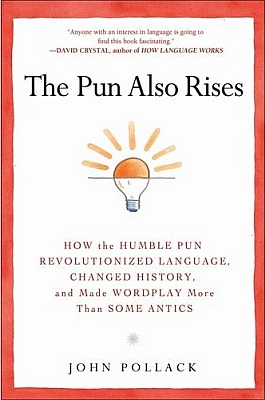- HOME
- INTRO TO THE FORUM
- USE AND MISUSE
- BADLY WRITTEN, BADLY SPOKEN
- GETTING
TO KNOW ENGLISH - PREPARING FOR ENGLISH PROFICIENCY TESTS
- GOING DEEPER INTO ENGLISH
- YOU ASKED ME THIS QUESTION
- EDUCATION AND TEACHING FORUM
- ADVICE AND DISSENT
- MY MEDIA ENGLISH WATCH
- STUDENTS' SOUNDING BOARD
- LANGUAGE HUMOR AT ITS FINEST
- THE LOUNGE
- NOTABLE WORKS BY OUR VERY OWN
- ESSAYS BY JOSE CARILLO
- Long Noun Forms Make Sentences Exasperatingly Difficult To Grasp
- Good Conversationalists Phrase Their Tag Questions With Finesse
- The Pronoun “None” Can Mean Either “Not One” Or “Not Any”
- A Rather Curious State Of Affairs In The Grammar Of “Do”-Questions
- Why I Consistently Use The Serial Comma
- Misuse Of “Lie” And “Lay” Punctures Many Writers’ Command Of English
- ABOUT JOSE CARILLO
- READINGS ABOUT LANGUAGE
- TIME OUT FROM ENGLISH GRAMMAR
- NEWS AND COMMENTARY
- BOOKSHOP
- ARCHIVES
READINGS IN LANGUAGE
This new section features links to interesting, instructive, or thought-provoking readings about the English language. The selections could be anywhere from light and humorous to serious and scholarly, and they range widely from the reading, writing, listening, and speaking disciplines to the teaching and learning of English.
Mixing serious literature with the law is fun, but is it desirable?
Can you mix serious literature and the law with desirable—or perhaps at least useful—results?
This has been attempted by Kenji Yoshino, a respected American legal scholar who teaches literature and the law at New York University, in his newly released book, A Thousand Times More Fair: What Shakespeare’s Plays Teach Us About Justice (Ecco/HarperCollins, 305 pages).

In the book, as a device for stimulating discussion, Yoshino matches a play of William Shakespeare with some modern event or issue to illumine or clarify understanding of particular points of law. For instance, Yoshino draws parallels between former US President Bill Clinton’s parsing of the term “sexual relations” and Portia’s “miserable pettifogging” in Shakespeare’s Merchant of Venice to illustrate legal obfuscation, and between O. J. Simpson's “bloody glove” and Desdemona’s strawberry-spotted handkerchief in Othello as a device for attacking reliance on “ocular proof” of guilt.
Does this comparative device work? In “Shakespeare Subpoenaed,” a review of A Thousand Times More Fair in the April 17 issue of The New York Times Sunday Book Review, Garry Wills says that the device might work well in class but doubts that it can do as well when used in a book. “The class on which this book is based is probably great fun, and students may sharpen some lawyerly skills by debating things like the bloody glove at Simpson’s trial,” Wills says. “But if they want more understanding of Shakespeare, they should sneak off to the theater, where he belongs, and not to a law class. They should go to Belmont.”
Read Garry Wills’s “Shakespeare Subpoenaed” in The New York Times Sunday Book Review now!
Read an excerpt of Kenji Yoshino’s A Thousand Times More Fair in Scribd.com now!
ABOUT THE BOOK’S AUTHOR:
Kenji Yoshino is the Chief Justice Earl Warren Professor of Constitutional Law at NYU School of Law. He was educated at Harvard, Oxford, and Yale Law School where he later taught from 1998 to 2008. Yoshino is the author of the 2006 book Covering: The Hidden Assault on Our Civil Rights and his works have been published in major academic journals, including The Columbia Law Review, The Harvard Law Review, The Stanford Law Review, and The Yale Law Journal. He has also written for The Los Angeles Times, The New York Times, and The Washington Post.
ANOTHER INTERESTING READING:
In “The Pun’s Story,” a review of John Pollack’s The Pun also Rises: How the Humble Pun Revolutionized Language, Changed History, and Made Wordplay More Than Some Antics (Gotham Books, 212 pages) in the April 15, 2011 issue of The New York Times, noted author P. J. O’Rourke says Pollack explains with unusual clarity how the mind, when presented with the multiple meanings of a pun, works “to make its best educated guess about the speaker’s intent, including the possibility that this intent is to convey multiple meanings.” But O’Rourke pans and pokes fun at the book for not adequately explaining why puns make us groan and why puns make us laugh, if and when they do.

Read P. J. O’Rourke’s “The Pun’s Story” in The New York Times now!
Click to read comments or post a comment
View the complete list of postings in this section
(requires registration to post)







